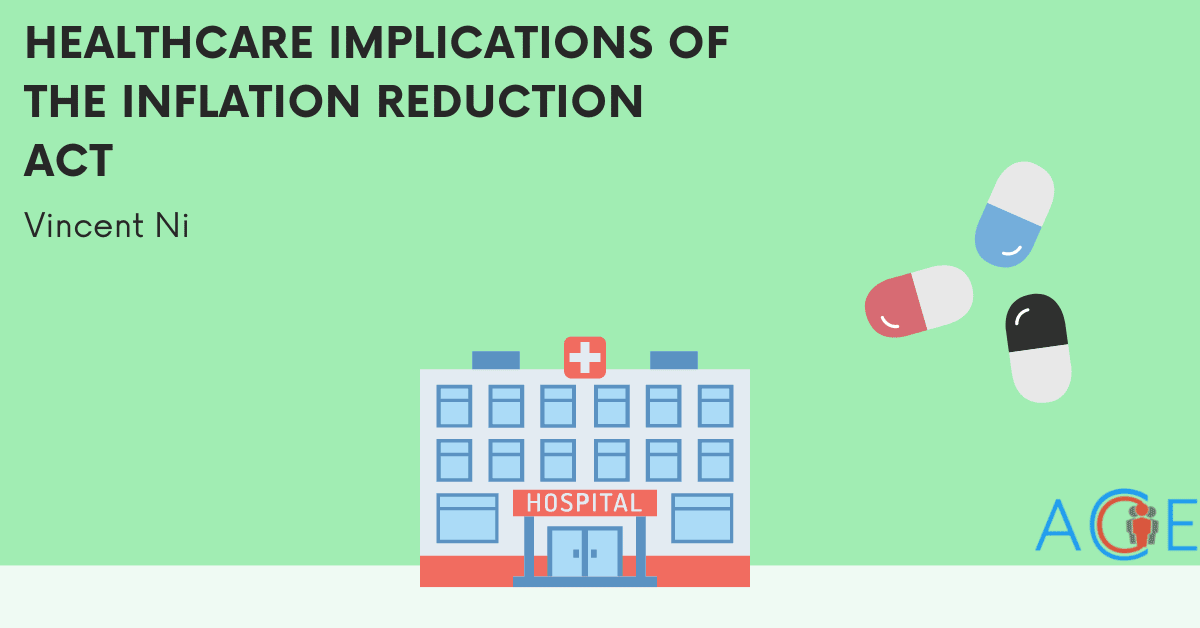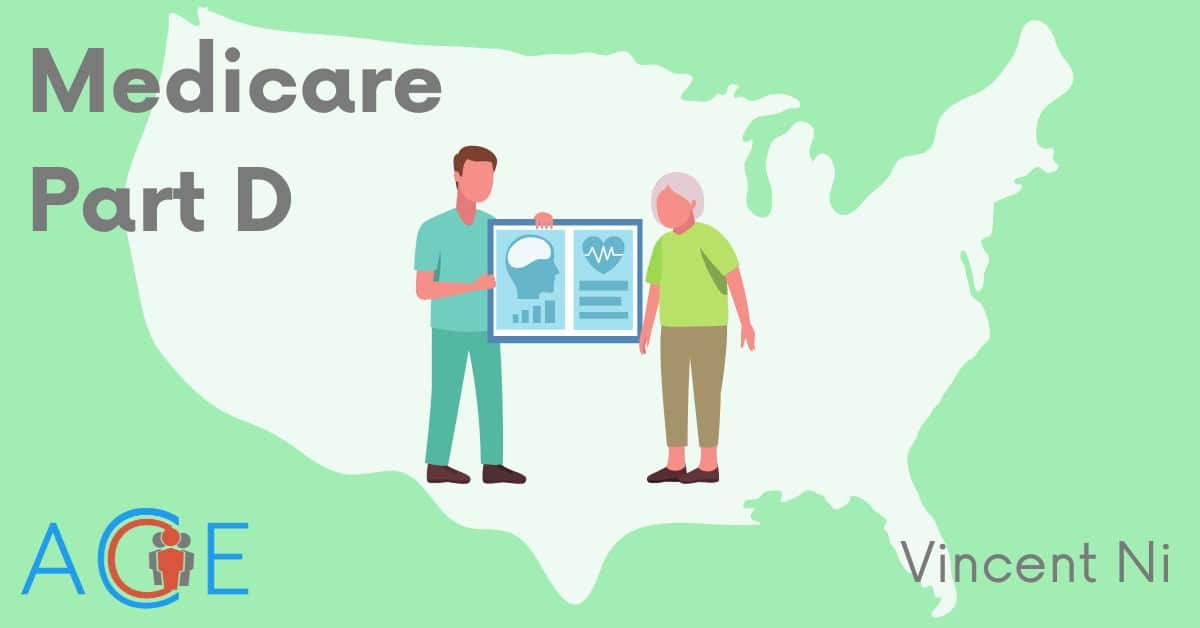Introduction
In resuscitating the previously stalled Build Back Better Act, the Senate Democratic Caucus has reached a reconciliation passage consisting of investments in climate/energy, IRS enforcement, deficit reduction, and healthcare in the 725-page Inflation Reduction (IRA). While the $300 billion is far from the original agenda that President Joe Biden had envisioned when Democrats regained the federal trifecta, it will still institute substantial changes to the US healthcare landscape as we know it, primarily intending to lower prescription drug costs for Medicare and private insurance enrollees. According to a CBO report, the prescription drug provisions, set to begin implementation in 2023, are projected to reduce the federal deficit by $288 billion by 2031. Additionally, it’s aimed at reducing Medicare out-of-pocket spending and limiting drug price increases.
Medicare Drug Price Negotiation
One of the key provisions rescued from the Build Back Better legislation enables Medicare to negotiate prescription drug prices. Currently, retail prescription drug benefits covered under Medicare Part D are provided by private plan sponsors contracted and approved by Medicare. Since its enactment, Part D is governed by the “noninterference” clause, establishing that the Secretary of Health and Human Services “may not interfere with the negotiations between drug manufacturers and pharmacies and PDP [prescription drug plan] sponsors, and may not require a particular formulary or institute a price structure for the reimbursement of covered part D drugs.” Concurrently, for physician-prescribed drugs covered under Part B, Medicare reimburses providers 106% of the Average Sales Prices (ASP), the average price for all non-federal purchases, including rebates.
Under the IRA, however, the Secretary of Health and Human Services will be required to negotiate prices for high-priced drugs covered under Medicare. This will apply to top-spending brands and biologic drugs without generic or biosimilar equivalents covered under Medicare Part B or Part D and are at least nine years (small-molecule drugs) or at least thirteen years (biologicals) from FDA approval. Beginning in 2026, the Secretary will be limited to negotiating 10 Part D drugs, 15 Part drugs in 2027, 15 Part B and Part D drugs in 2028, and 20 Part B and Part D drugs in 2029 going forward.
Rather than simply allowing the Secretary to negotiate drug prices as in the previous House-passed BBBA, the IRA closes the “rogue Secretary” loophole by requiring the Secretary to negotiate the maximum number of drugs that year, to the extent that the number of drugs is eligible for negotiation. CBO predicts $99 billion in Medicare savings from IRA’s version of the drug price negotiation provision, as opposed to $76 billion for its BBBA counterpart.
Pros and Cons of the Medicare Drug Price Negotiation Provision
A recent Kaiser Family Foundation Tracking poll found that, after hearing arguments on both sides, 83% of respondents are in favor of the federal government negotiating the Medicare drug prices.
Significant biomedical innovations, including vaccine development during the COVID pandemic, have come at a high cost. In 2019, the US spent more than $1,126 per capita on prescription drugs, following a steep increase from $831 in 2013. Comparatively, countries like the United Kingdom, Australia, and Germany paid $285, $434, and $825 respectively in 2019. For example:
- Dulera, an asthma medication, has a US listing price 50 times more than that of its international average.
- Januvia, a diabetes drug, and Combiga, for glaucoma, cost about 10 times more.
- Insulin, costs $98.70 per vial in the US, versus $6.94 in Australia.
This exacerbated the cost-related noncompliance situation in the US, with roughly 18% of adults, especially seniors, reporting that they skip their prescribed medications due to cost. In peer nations, this proportion of cost-related nonadherence is nearly unheard of.
One of the biggest opponents of this provision is the pharmaceutical industry. They argue that by empowering the HHS Secretary to negotiate drug prices, long-term innovation in medical development will be stifled. To that point, the new CBO report estimates that 15 out of 1,300 potential drugs, or 1%, will not be commercially available in the next 30 years. A separate study from the University of Chicago analyzing the analogous Medicare negotiation provision from the BBBA paints a bleaker picture. It projects a $663 billion, or 18.5%, decline in research and development spending through 2039, resulting in R&D funding delayed by up to seven years and 135 fewer market-available drugs for consumers.
Critics of the law also indicate several possible implementation challenges to the way the negotiation provision is designed. For instance, since the IRA gives Medicare the authority to regulate high-revenue drugs that have been FDA approved for at least nine years and do not have a competitor—generics are only allowed to enter the market to compete with their name-brand counterparts after the expiration of their patents. However, the market entry period, the interlude between a drug’s launch and first generic entry, for high-selling drugs is around 13 years. Therefore, critics argue Medicare’s regulatory negotiations may be delayed. Additionally, drug manufacturers can make agreements with generic drug producers that allow the generic to be available on the market to be sold in only a small quantity prior to the end of the patent protection period. In doing so, drug manufacturers can evade Medicare’s price-setting authority, rendering it essentially inept.
Inflationary Cap on Drug Manufacturers
Reining in prices for people with Medicare and private insurance is one of today’s biggest healthcare policy demands. The IRA will institute rebates on drug manufacturers that increase prices at a rate greater than that of inflation. This provision will be implemented starting in 2023, using 2021 as the base year of the inflation metric. Due to the disincentivization of list prices reducing spending and rebates as sources of new revenue, the CBO estimates a net federal deficit reduction of $100.7 billion over 10 years.
The number of individuals, whether Medicare-covered or privately insured beneficiaries, who will have lower out-of-pocket drug costs in a given year under this provision is dependent on how many and which drugs will experience lower price increases and the extent of the price changes relative to 2021’s baseline.
Pros and Cons of the Inflationary Cap Provision
The status quo has prompted many to be in favor of an inflationary cap. In 2021, drug manufacturers of 900 brand-name drugs increased prices by a record average of 4.2%. Between 2018 and 2019, half of Part D covered drugs experienced a price increase beyond that of the 1.8% inflation, with some reaching as high as 19.7%.
While the Medicare program has long existed without an inflationary cap, the Medicaid program has had one in place since 1993. In terms of holding down prescription drug spending, it’s largely successful as Medicaid now pays the lowest prices of all federal healthcare programs. A 2015 HHS report indicates that the provision is responsible for more than half of the existing price differential between the same products under Medicare and Medicaid. Consequently, the Medicare Payment Advisory Commission (MedPAC) and HHS have both advised that such a provision in Medicare can lead to significant savings.
A similar provision appeared in both the 2019 Prescription Drugs Pricing Reduction Act (S. 2543) and the Elijah E. Cummings Lower Drug Costs Now Act (H.R. 3), and the CBO projected up to $10 billion over 10 years in reduced cost-sharing and premiums. While the CBO anticipated that the inflation rebate will reduce the cost of prescription drug benefits in commercial insurance plans, it also anticipated that manufacturers would increase the launch prices of new drugs to balance out the rebate’s effects. Additionally, a Milliman report concluded that the provision would result in modest price increases for private insurance in the commercial market.
In terms of the federal budget, the increased federal savings will eventually reduce Medicare program spending. It will also result in a moderate gain in tax revenues due to employers increasing taxable wages for their employers rather than having to pay insurance premiums. Furthermore, since state Medicaid programs already have instated inflationary rebates, smaller increases in drug list prices will reduce the states’ rebate amounts.



